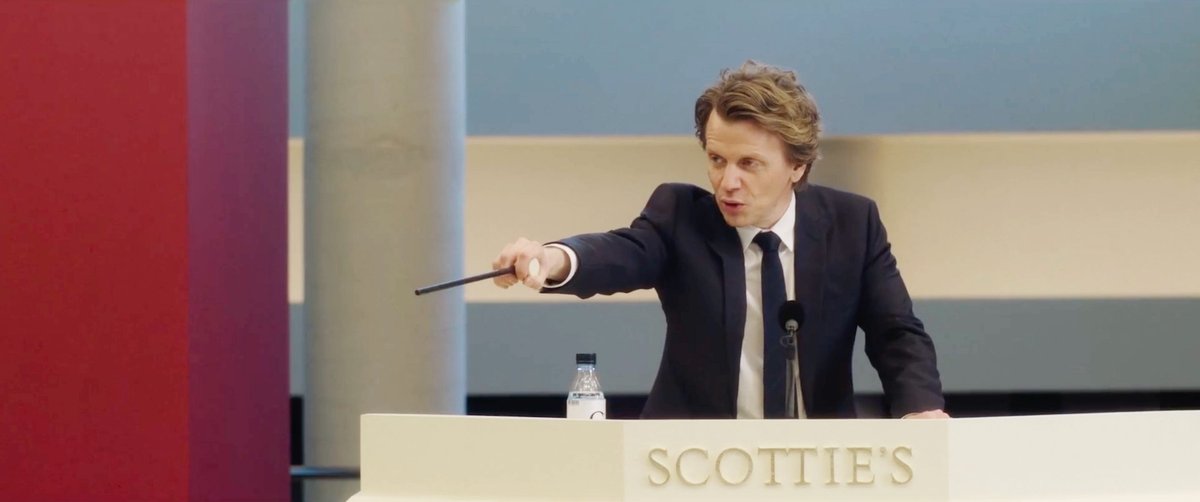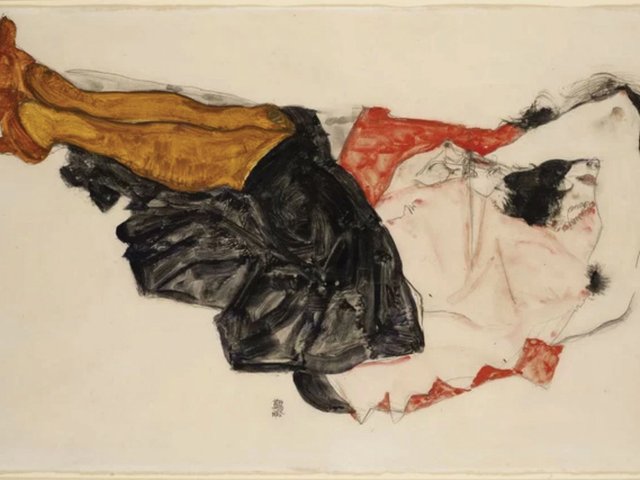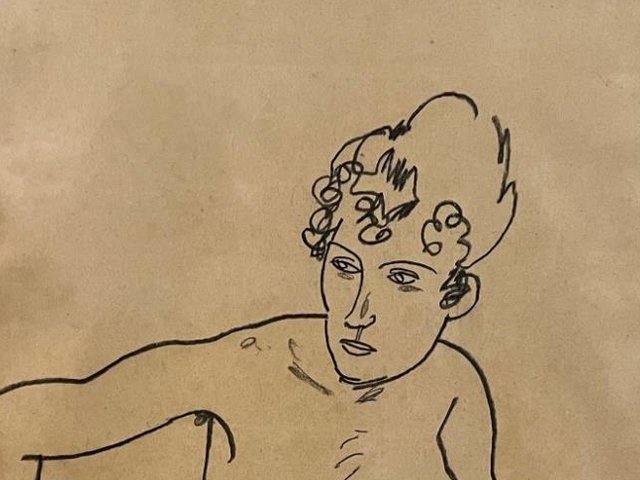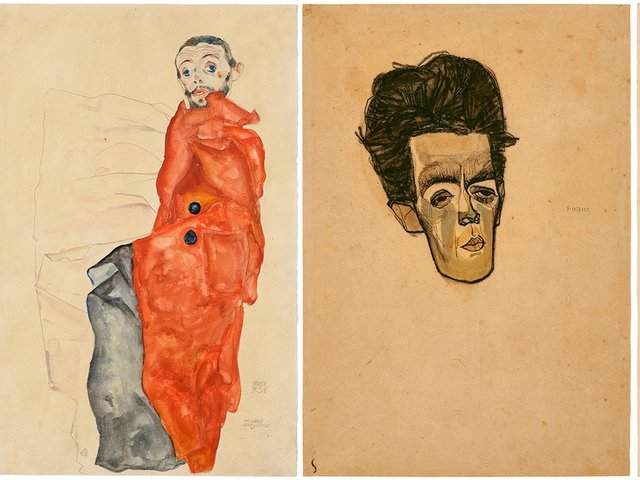The 2024 French film Auction opens with an elderly blind woman negotiating selling a work of art. “An auctioneer is like a plastic surgeon. You have to trust them,” she says. “So I trust you.”
She entrusts her piece to André Masson (played by the actor Alex Lutz)—a character named for the French Surrealist painter—who explains to his new assistant: “The fantastic part of the job is turning up a real rarity. You’re Indiana Jones. But 99% of the time is soliciting. Like a whore.” Love of art contrasted with the business of art is at the heart of this film, whose title in French is Le tableau volé (The stolen painting). The rarity in this scene is Egon Schiele’s Wilted Sunflowers (Autumn Sun II) (1914), a work once confiscated by the Nazis.
Based on a true story, the French filmmaker Pascal Bonitzer’s Auction takes its audience to the Alsatian city of Mulhouse. There, a young chemical-factory worker named Martin Keller (Arcadi Radeff) discovers that among the belongings in the house he has just purchased—in order to be near his widowed mother—is a large painting that turns out to be the long-lost Schiele.
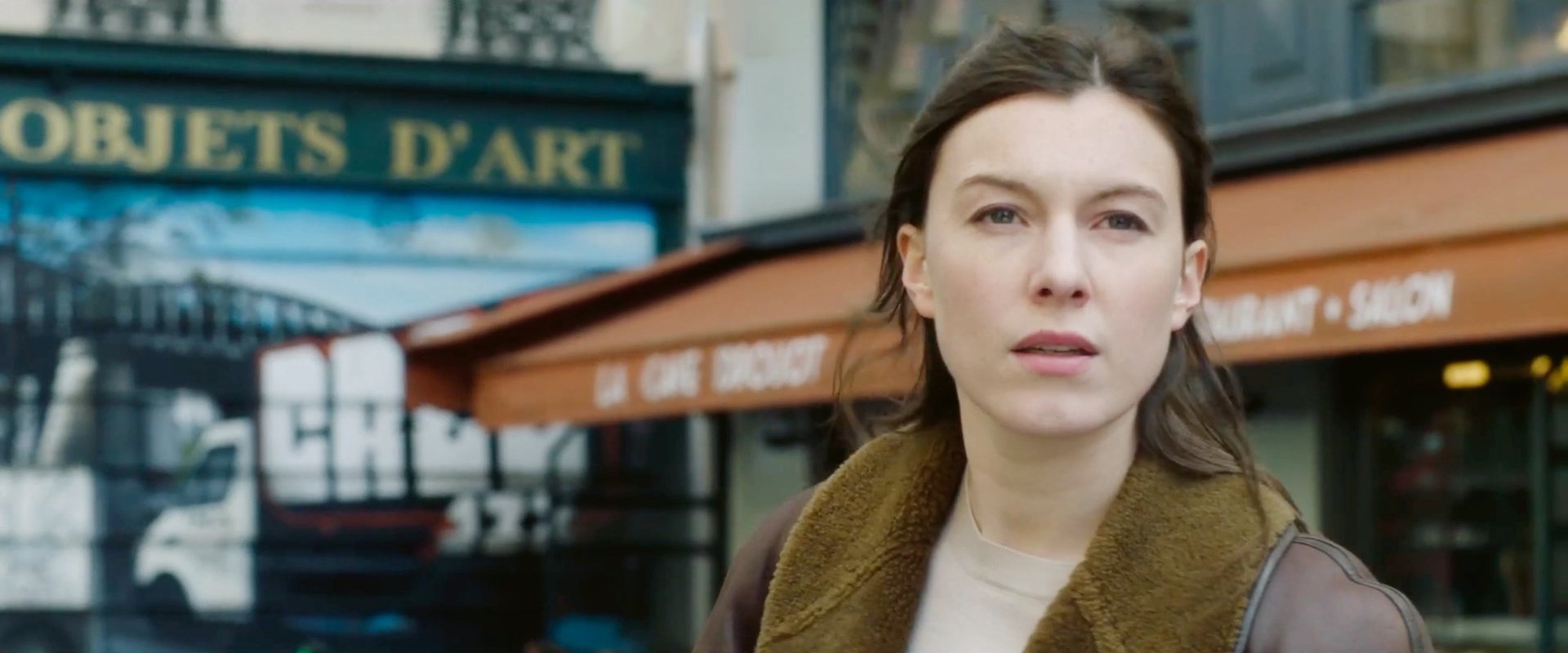
Still from Auction (2024) © Menemsha Films
Although Schiele was inspired by Vincent van Gogh’s bright, blooming sunflowers, his own depiction is sad, dark and depressed by the looming First World War. Thomas Seydoux, a former director at Christie's France, has described the work as a “large, dark oil painting, uncut flowers, but sickly sensual, blue, violet, ochre, brown like spiders. Almost a self-portrait.” (André’s character is based on Seydoux, who together with his colleague Andreas Rumbler travelled to Mulhouse and identified the work.)
During André’s initial visit to Martin’s home, they discover documents that show “the well-spent youth of your former owners… You see? They worked for the German police.” The painting had ended up there because of its official status as “degenerate art” to the Nazi government.
“For them, it was worthless,” André explains. “So they either destroyed the paintings, or they gave them out as tips to a few local collaborators in return for their services.” André knows that the painting was owned by a Jewish man named Stefan Wahlberg, who would escape to the US but not before being arrested by the Nazis—they confiscated his art collection in Strasbourg, 70 miles from Mulhouse. Wahlberg’s American heirs are contacted, and Martin agrees that their claim of restitution is valid.
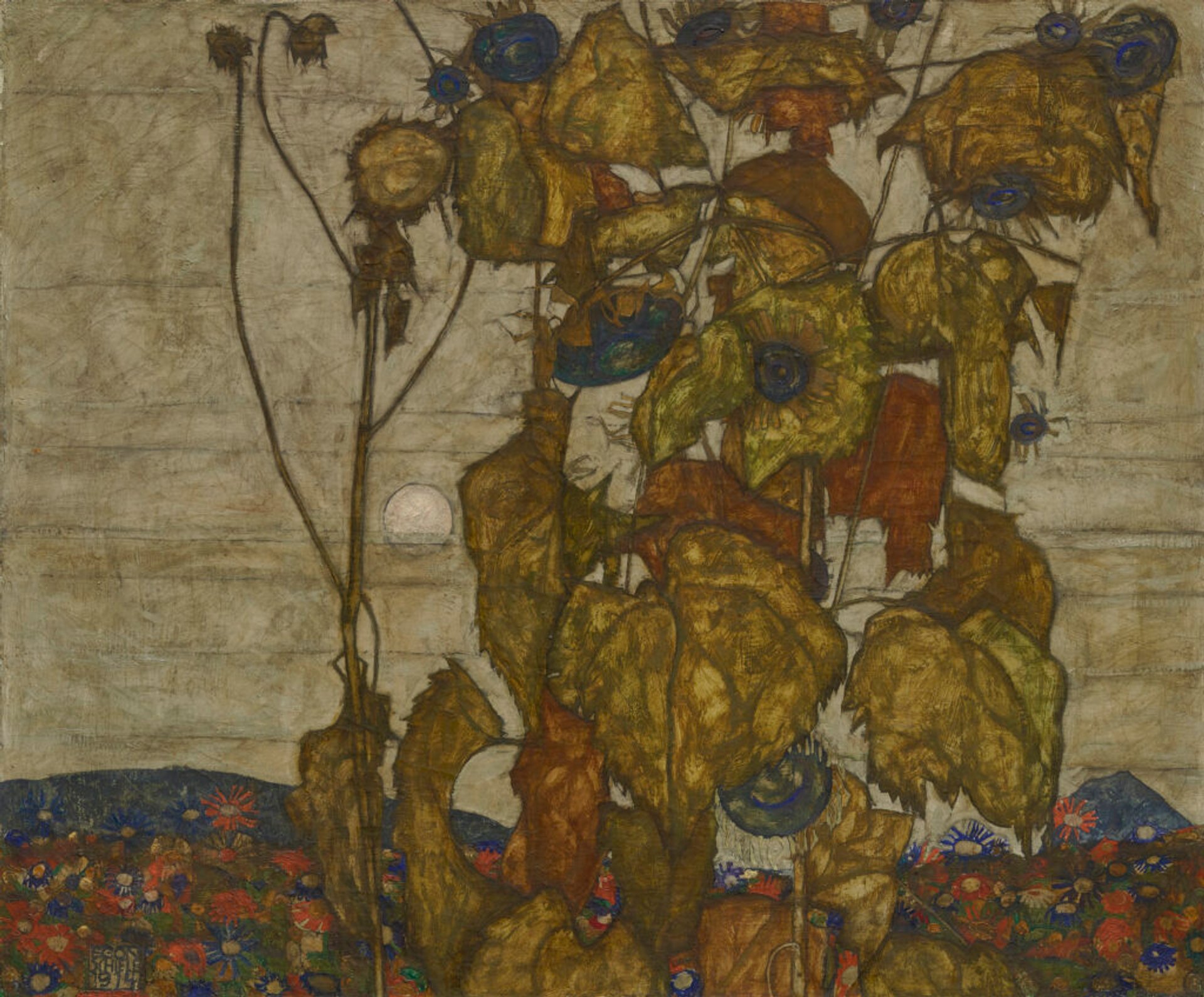
Egon Schiele’s Wilted Sunflowers (Autumn Sun II) (1914) Courtesy Eykyn Maclean
In reality, the collector was Karl Grünwald (1899-1964)—an art and antique dealer who was friends with Schiele, Gustav Klimt and Oskar Kokoschka. In fact, it was Grünwald who arranged for Schiele to be a war artist rather than a soldier in the First World War. Schiele even made a portrait of Grünwald. Although Grünwald’s wife and daughter were killed at a concentration camp, his other children continued to seek recovery of his art collection. Their key objective was the return of Wilted Sunflowers.
In the film, the Wahlbergs agree to have André auction the painting at the fictional Scottie’s auction house. Once the painting goes to Scottie’s—filmed inside the architect Christian de Portzamparc’s Cité de la Musique in Paris—a Schiele expert named Samson Körner (Peter Bonke) is brought in to examine the work. (Bonitzer tells The Art Newspaper that he borrowed the character’s name from Bertolt Brecht’s 1926 short story Life Story of the Boxer Samson-Körner.) Körner declares: “I’m disappointed. It’s not a first-class work. It’s a very inferior painting.”
Körner’s character is based on Rudolf Leopold (1925-2010), whose collection formed the basis of Vienna’s Leopold Museum—it holds the world’s largest collection of Schiele works.
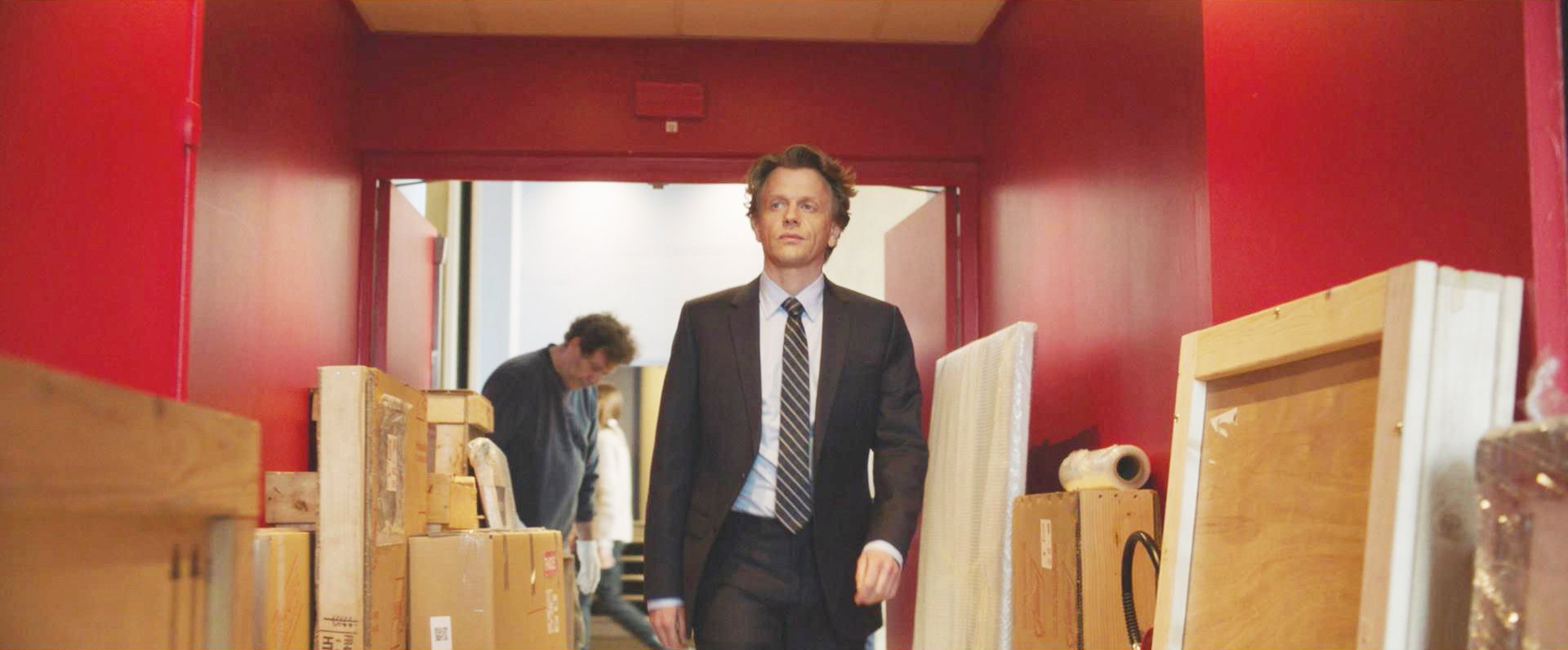
Still from Auction (2024) © Menemsha Films
The film takes a turn when the Wahlbergs decide to take a firm offer to sell the painting for €8m, being advised that it would not fetch a higher sum at auction. It turns out that a backdoor deal has been brokered, duping the Wahlbergs. André cracks: “Classic. Denigrate the product to buy it on the cheap.” By revealing the plan, he can secure the sale for Scottie's. The auction takes place in Paris, where the bidding starts at €8m and hammers for €25m.
In real life, Christie’s auctioned Wilted Sunflowers in London in 2006 for £11.8m. (Those in New York may have seen the painting recently; it was on display at Manhattan’s Neue Galerie in the 2024 exhibition Egon Schiele: Living Landscapes.)
At the end of Auction, Martin gets a share of the proceeds but decides to go back to work at the factory, his life virtually unchanged. In this world so consumed by money and power, he seems largely unaffected by his windfall—just like his real-life anonymous counterpart.
Watch the trailer for Auction:
- Auction opens at Film Forum, New York, on 29 October


